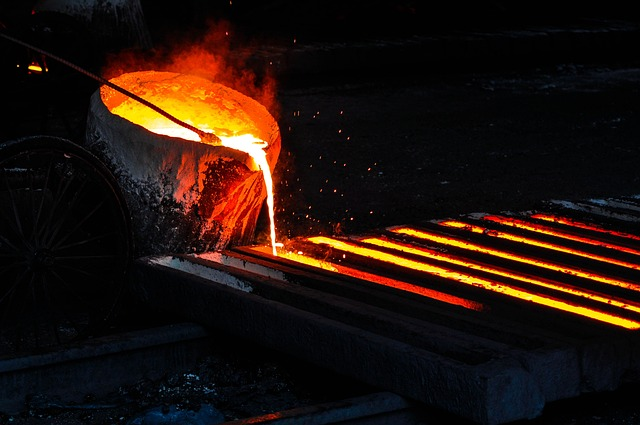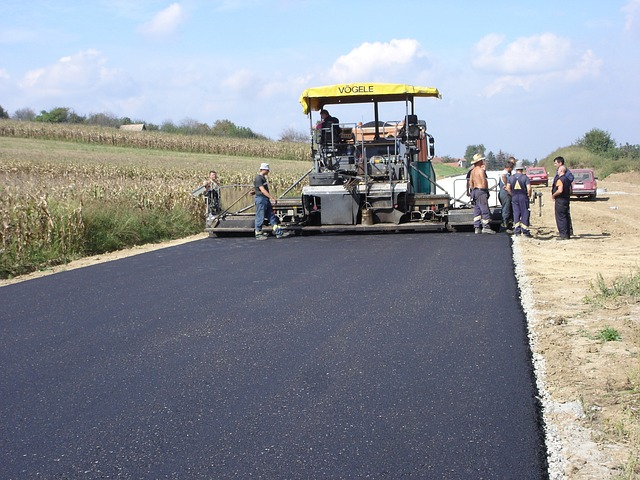Many individuals are being supportive of sustainable practices, and many companies are following them to support the environment’s health. One of the ways an individual or an organization can contribute to environmental benefits is to reduce landfill waste.
The most effective way to minimize its environmental impact is to reuse waste. These wastes have different beneficial uses, especially those that come from a small foundry or huge steel and aluminum foundries.

A good example would be spent foundry sand. This article will discuss with you information about foundry sands, including waste foundry sand and what you can do with it.
Foundry Sands: Definition and Uses
Foundry sand, or molding sand for some, is an essential material for the molding process or metal casting. These are made from high quality silica sand that is compressed by using chemical binders and readied as a mold used for the casting process of iron. High quality silica sand is the top choice of foundries since this has excellent heat absorption.
These will be reused many times during the casting process. Once this is deemed unusable, the bonded foundry sands will be broken apart for sand reclamation. The casting sand that can be reused se separated from the sand unsuitable for the next casting process. The unsuitable ones will be brought to recycling plants for further testing. It becomes unusable because of mechanical abrasions and processes that use high temperatures.
Some road constructions also use foundry sand in hot mix asphalt mixtures because of its chemical and physical properties.
What Casting Sand to Use
The sand casting process is done by casting companies because it is cost-efficient. This process has been used in operation for more than thousands of years already. Now that it is modernized it has been used by the steel and aluminum foundries for both ferrous and non ferrous metals.
The techniques of the sand casting process that these foundries use differ on the sand they use. Here comes the most common types that these foundries use.
Green Sand
This green sand comes in a clay form made with sand with a greenish color. Using green sand is one of the top choices of foundries because it is cheap and can be reused. Green sand is one of the most reliable materials and can retain its shape even under pressure.
It is also easy to without spending too much. The silica sand is mixed with water of around 6% as the binder system of the green sand.
The green sand is a good option for companies who want to reduce costs of casting.
Sodium Silicate
Compared break down green sand, the sodium silicate needs to be mixed with other materials. Sodium silicate also can be formed quickly because of carbon dioxide.
The downside of using a sodium silicate is it may break down when mixed incorrectly.
Resin Sand
green sand is inexpensive and easy to use, resin sand is the complete opposite. Its new sand costs more than other options. In addition to that, it requires constant replenishment, which adds more cost.
Casting Sand Types With Specific Uses
Green sand, resin, and water glass are the common sand used by foundries. Large quantities required in production may require a different sand type for the process. Some of these are loam sand and dry sand.

Some sands are also used for a different purpose in the molding process. Facing sand is placed to the patterned surface when the molten metal is poured to the casting molds. The facing sand possesses clay and silica contents which are added to the virgin sand. These materials are helpful in providing strength the casting molds need, because it may break down when the molten metal is poured. It has the direct contact with the molten metal during the molding process.
What is a Spent Foundry Sand
Casting companies generate tons of foundry wastes annually. Usually, these come as waste foundry sands, and some hazardous waste from these companies only comes in small amounts. These will be identified as wastes when it plays no role during the casting process anymore.
The virgin sand will be used continuously in preparing the casting molds and during the the casting process of metals. The virgin sands are fine aggregates of high-quality silica sand that come as industrial by products or waste materials of casting processes or construction projects from iron or aluminum foundries.
The recycled foundry sand will eventually deteriorate and lose its purpose after a couple of reuses.
Benefits of a Spent Foundry Sand

Foundry wastes like spent foundry sand have beneficial uses. It can be used for highway applications, soil blending, and many others. It can even be used for manufacturing new products.
Though it is considered a waste, it offers environmental benefits and cost-cutting benefits. The spent foundry sand is found to help in cost reduction, especially in road and structural projects.
The Environmental Protection Agency had a risk assessment on the beneficial uses of million tons of spent foundry sand in different industries. The EPA supports the reuse of foundry sands, as long as it will pass different tests and a risk assessment. According to the agency, 96% of these foundry sands have beneficial uses.
Waste management of spent foundry sand is regulated by states to ensure that the physical properties and engineering properties of the recycled foundry sand meet the requirements of the state when it comes to human health and environmental benefits.
Recycled Foundry Sand Application
The Environmental Protection Agency has approved several beneficial uses of spent foundry sand. These recycling practices are evaluated to promote waste management, lessen its risk to human health, and provide environmental benefits. Its chemical composition, physical properties, and mechanical properties are tested. According to the EPA, a spent foundry sand can provide beneficial uses to the following:
Support on Construction Projects
The physical characteristics a spent foundry sand possesses are the same as with the raw materials that are suitable for use as structural fills. It can be used to support construction projects such as buildings, road construction, or parking areas. The Federal Highway Administration also approves of using foundry sand for these kinds of construction projects.
Foundry sands used for structural fillings are used with clay covers or liners. Waste foundry sand used for this purpose needs to have a leaching assessment first to minimize future leaching process.
Raw Materials for Flowable Slurry
A flowable slurry is a liquid-like material that is used as a partial replacement option for soil backfill. Its mixture is made with different materials such as fly ash, virgin sand, and portland cement.
The foundry sand can be used as a replacement of virgin materials used in the flowable slurry mixtures.
New Cement Products
The components of the portland cement concrete can be matched with the properties foundry sans have. With the silica contents of a waste foundry sand, it can be considered as an excellent raw material in lieu of a regular concrete sand, if the latter is not readily available. Both provide the same mechanical properties, which means the foundry sand produces the same quality.
Raw Materials for Asphalt Mixes
Like in cement and flowable fills, foundry sands are a good substitute for fine aggregates for asphalt pavements.
However, the foundry sand that will be used for a hot mix asphalt will have a risk assessment. To make sure that it will provide a good and quality result, it needs to undergo resilient modulus screening. These processes will help in removing the unsuitable materials in the mixture. In addition to that, small foundries may spend on transportation costs since these foundries produce minimal foundry sand. It needs to be delivered to a central location before it is used for a hot mix asphalt.
Soil Blending
Apart from the use in construction projects and structures, spent foundry sands may also be used in horticultural purposes. Usually, these are mixed with fertilizers, top soil, and peats. It may also be used as a composting material in agricultural projects.
Spent Foundry Sand Facts Worth Knowing
This is some helpful information not only for civil engineers, but also for iron, steel and aluminum foundries who are looking for ways on waste management practices. Listed below are some of the facts that you might want to know:
- A percentage of 55% to 90% foundry wastes can be reusable
- Spent foundry sands can be recovered up to 95% by reclamation systems
- The Toxicity Characteristics Leaching Procedure (TCLP) identifies the metal concentrations that may seem risky
- The Environmental Protection Agency coordinates with higher government to achieve the objectives of waste management policy
- The Environmental Protection Agency requires a risk assessment for every reuse project
- A good waste management of spent foundry sands may reduce costs, save energy, and reduce the mining of virgin materials and extraction of river sand
- A state permit may be required for particular reuses
- Sampling and testing are done to ensure that the components of the spent foundry sands are not altered and original composition is still in tact
- Spent foundry sands are non-hazardous and displays engineering characteristics that can be beneficial for construction projects
- Foundry sands from bronze foundries are regulated as hazardous and may contain harmful elements to human health
Summary
Knowing the proper waste management of spent foundry sands offers a lot of beneficial uses. Not only it minimizes risks to the environment, but it may also be used in different ways, such as asphalt pavements, soil blending, and structural support. Though reusing may require a lot and long process, it may save energy, reduce costs, and improve the quality of the environment we live in.


